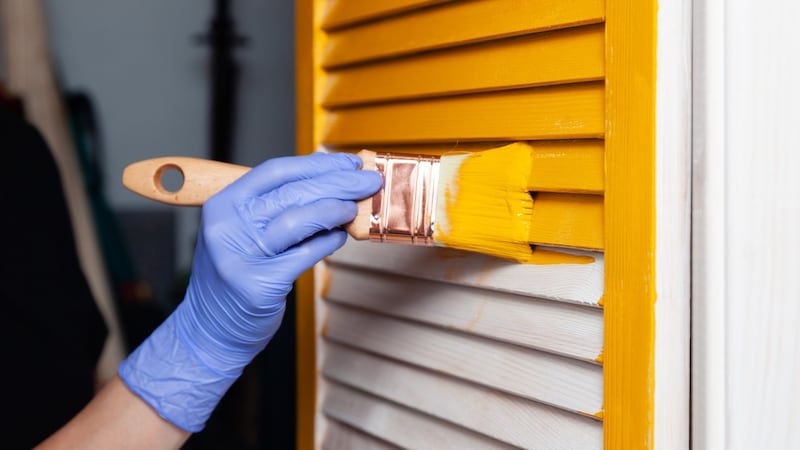DIY and especially painting projects were hugely popular in 2020. This trend is continuing into 2021. People with time on their hands and keen to break the monotony of days spent at home are increasingly arming themselves with brushes and turning their hand to painting.
But achieving a professional finish isn't as easy as picking the right paint. Kate Gaynor of the Paint Hub offers a few tips for buying the right shade and successfully tackling a DIY project at home.
Quality
When deciding which paint to buy, it might be tempting to go for a brand that boasts a high coverage. But coverage doesn't directly relate to quality; in fact, it often has an inverse relationship.

Winter Nights
“Many inferior paints give lots of coverage,” says Gaynor. This is because they can have a high chalk content and low resin content, making them thinner, but allowing more coverage. However, the amount of resin in a paint is very important. The resin is what gives paint its durability. The higher the resin content, the better the quality.
Choose the right tools
When it comes to achieving a great finish, your choice of tools is essential. Avoid the temptation to use old brushes and other tools you have lying around the house.
“If people are using an inferior old brush with a lovely new paint, they will struggle to get a good finish,” says Gaynor. “One of the most common issues we see is people using old black bristle brushes. No one should be using these at this stage. They are made from hog hair so are not cruelty-free and are very firm, so tend to dig troughs into the paint that don’t ever level back out.”
Gaynor recommends looking for good quality synthetic brushes instead.
Oil or water-based?
For woodwork Gaynor strongly advises against using oil-based paints: "With oil-based paints no matter what brand you choose, it will yellow over time."
She recommends water-based paints, which are odour-free and don’t yellow. They are also faster drying, more eco-friendly and much easier to wash your tools after painting.
When do you need a primer?
A primer is only required when you are dealing with a raw porous substrate such as unfinished wood or plaster, or a difficult or slippery surface such as ceramic tile. If you are painting interior walls or woodwork that has been painted before, there is no need for a primer.
However, priming newly built or plastered walls is very important. You should never thin down the first paint coat instead of priming. Thinning down the first coat iscommonly done to save money, but it’s not the best practice. Using a primer is cheaper than watering down and will ensure you get the best possible finish.
When do you need an undercoat?
An undercoat is designed to bridge a colour gap when painting. You would typically use it when painting a light wall a dark colour, or conversely going from a dark colour to a much lighter shade.
You can also use an undercoat to save on cost. For example, if you wanted to paint a light wall in a dark colour and were using a high-end paint. Instead of applying three coats of the expensive paint, you could use a less expensive undercoat tinted to a dark colour as your first coat.
Another suggestion is to use some old paint that you might have at home if cost is an issue. If, for example, you are painting a light-coloured wall black, a dark- coloured paint such as a dark green or Navy that you might happen to have in your shed or garage will work as an undercoat.
Warm up the paint
Your paint's temperature is important in order to achieve a smooth finish. Always make sure the paint is warm before you apply it. "When the paint is warm, it will flow like silk, but if it is cold, it will be jelly-like and difficult to work with," says Gaynor.
If you have been storing your paint somewhere cold like a garage or shed, Gaynor suggests taking it along to your local paint shop and asking them to pop it onto the spinner for you. Alternatively, you can give your paint a hot water bath. Just pop your tins in a basin of hot water, open the lids and stir the paint. The stirring is important as it agitates the paint, helping it warm up evenly.











